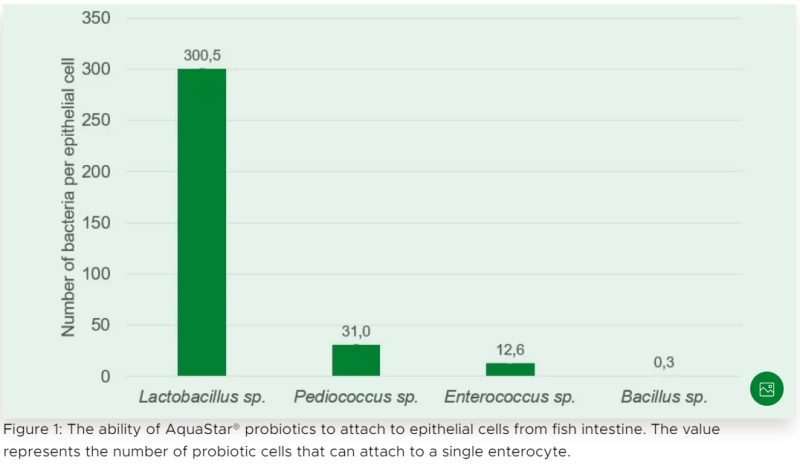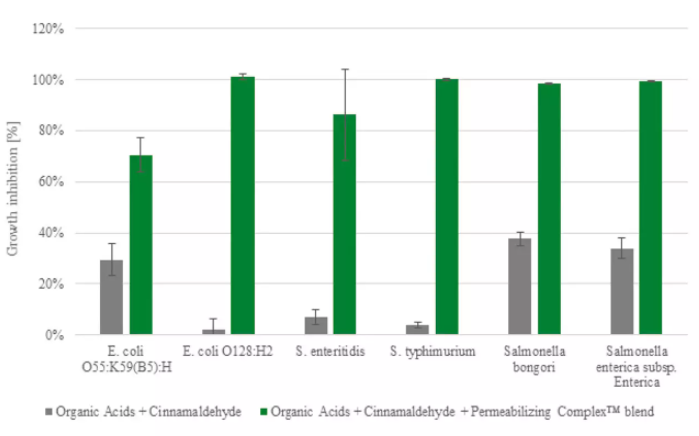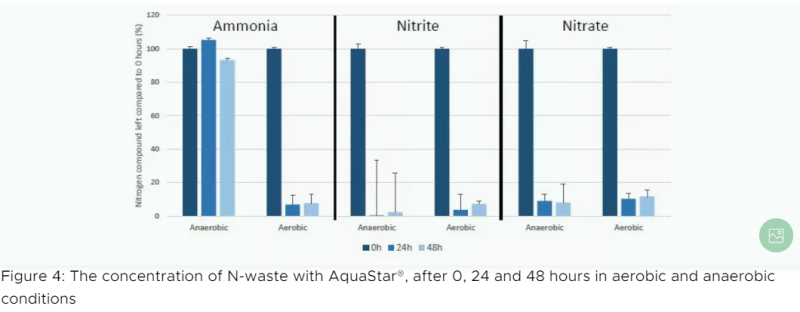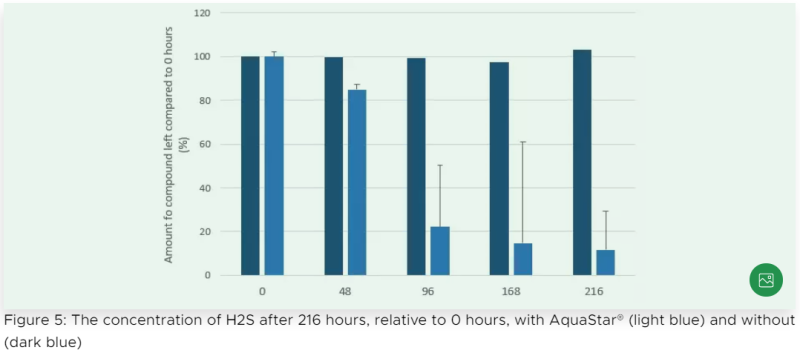Enhanced TDS
Knowde-enriched technical product data sheet
Identification & Functionality
- Animal Feed & Nutrition Functions
- Technologies
- Product Families
Features & Benefits
- Animal Feed & Nutrition Features
- Main Benefits
- Improves survival
- Inhibits pathogens
- Promotes disease resistance through immunomodulation
- Improves gut barrier function
- Improves growth performance
- Improves water qualityin part by reducing toxic metabolites Eg. Ammonia, nitrite, nitrate & hydrogen sulfide
- Reduces organic matter in pond environments
- Improves pond sediments
- Increases productivity
- Product Information
Gut colonization
To successfully colonize the gut, probiotics must be able to adhere to the intestinal epithelial cells, enterocytes. Once this is achieved, they can competitively exclude invading pathogens, and interact with the host immune system. AquaStar® strains can successfully attach to fish enterocytes, demonstrating their effective colonizing ability (Figure 1).
 Disease resistance
Disease resistanceBy controlling pathogens and positively modulating the immune system, AquaStar® application can improve the disease resistance of aquatic animals. Figure 2 shows the survival of white shrimp (Litopenaeus vannamei), with and without AquaStar®, after a Vibrio parahaemolyticus challenge.
 Enzyme production
Enzyme productionBacillus spp. are well known for their ability to produce enzymes. In the gut these can contribute to better feed digestibility and reduced FCR. If applied in the water they can break down organic matter in the environment, facilitating the release of highly digestible components and preventing the accumulation of toxic sediments. This effect can be further stimulated by the addition of enzyme cocktails, as in AquaStar® PondZyme.
However, the ability of Bacillus spp. to produce enzymes is highly variable, and the strain chosen for AquaStar® products demonstrated the highest combined protease, amylase and cellulase activity (Figure 3).
 Nitrogen waste control
Nitrogen waste controlAmmonia (NH3), nitrite (NO2-) and nitrate (NO3-) are all toxic to aquatic animals. The bioremediation strains in AquaStar® Pond and AquaStar® PondZyme can significantly reduce these metabolites, in a range of environmental conditions (Figure 4).

Hydrogen sulfide removal
Hydrogen sulfide (H2S) is generated as organic matter decomposes, and is extremely toxic in very low concentrations. AquaStar® strains can reduce the abundance of H2S in water and sediments (Figure 5).

Applications & Uses
- Markets
- Applications
- Animal Species
- Mode of Action
The Science Behind AquaStar® – Mode of Action
Pathogen inhibition
The strains in AquaStar® are capable of inhibiting a wide range of aquaculture pathogens, both Gram-negative and Gram-positive (Table 1).
Pathogen Enterococcus sp. Pediococcus sp. Lactobacillus sp. Bacillus sp. A. hydrophila 51-75% 51-75% 51-75% 26-50% A. salmonicida 76-100% 76-100% 76-100% 1-25% E. tarda 76-100% 51-75% 76-100% 26-50% F. indologenes 76-100% 76-100% 76-100% 26-50% P. fluorescens 0% 0% 0% 1-25% S. agalactiae 51-75% 51-75% 51-75% 26-50% S. iniae 51-75% 51-75% 51-75% 76-100% V. alginolyticus 51-75% 26-50% 51-75% 51-75% V. diazotrophicus 51-75% 26-50% 51-75% 1-25% V. harveyi 51-75% 51-75% 51-75% 26-50% V. parahaemolyticus 76-100% 76-100% 76-100% 26-50% Y. ruckeri 76-100% 51-75% 76-100% 76-100% Table 1: Pathogen inhibition* of AquaStar® probiotics
- Applications
Dissolve thoroughly in un-chlorinated water (minimum 1:20 ratio). Ideally leave for 20 min to 'activate' and apply in the tank water or with live feed.
Dosage
- 2-5 g/ 1,000 L or 100,000 larvae at least once per day